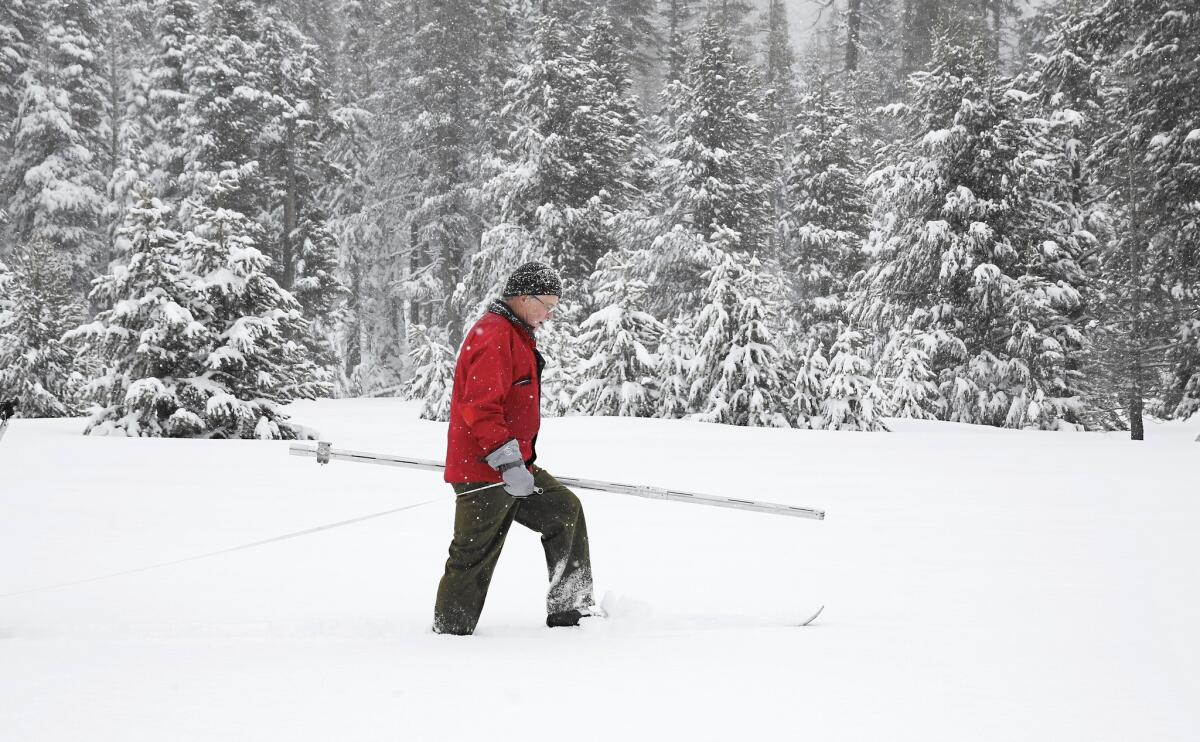Scientists confirm: El Niño a disappointment in still-too-dry Southern California

- Share via
The National Weather Service has confirmed what many Southern Californians suspected during a scorching February: El Niño, and its badly needed rainstorms, are pretty much kaput.
“It’s looking pretty grim,” said Anthony Barnston, the chief climate forecaster for the International Research Institute for Climate and Society in New York. “This winter was really disappointing.”
This week, the National Weather Service Climate Prediction Center published an El Niño advisory that not only forecast the end of the Pacific Ocean-warming phenomenon, but also warned that El Niño’s drier flip side, La Niña, would replace it by the end of the year.
Based on falling water temperatures in the equatorial Pacific, meteorologists are predicting that El Niño will end this spring or early summer.
Last fall, many scientists predicted that El Niño would give Southern California the best chance for above-average rains, while Northern California was predicted to get much less precipitation. In reality, the exact opposite has happened.
Southern California is still well below on average rainfall, with downtown Los Angeles reporting 58% of normal since Jan. 1. But deluge after deluge to the north has built back the snowpack — it’s 105% of normal in the Sierra Nevada — and has begun to refill drought-depleted reservoirs.
That pattern may continue if the warm equatorial waters that cause El Niño are replaced by cooler waters, which would lead to a dry La Niña winter in Southern California but increased rainfall in Northern California and the Pacific Northwest, said Tom DiLiberto, a meteorologist at the Climate Prediction Center near Washington, D.C.
La Niña probably would begin in late summer or early fall, and its severity is still uncertain. But a parched winter could lead to a higher chance of wildfires, scientists said.
“We never got out of fire season, so all we need is a little [lightning] and half a dozen pyromaniacs for a lot of fires,” said NASA Jet Propulsion Laboratory climatologist Bill Patzert.
Follow @byjsong on Twitter
ALSO
226 drought maps show just how thirsty California has become
Sierra snowpack shows improvement, but not enough to declare California’s drought over
No, California’s drought isn’t over. Here’s why easing the drought rules would be a big mistake
More to Read
Sign up for Essential California
The most important California stories and recommendations in your inbox every morning.
You may occasionally receive promotional content from the Los Angeles Times.











